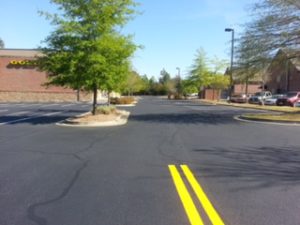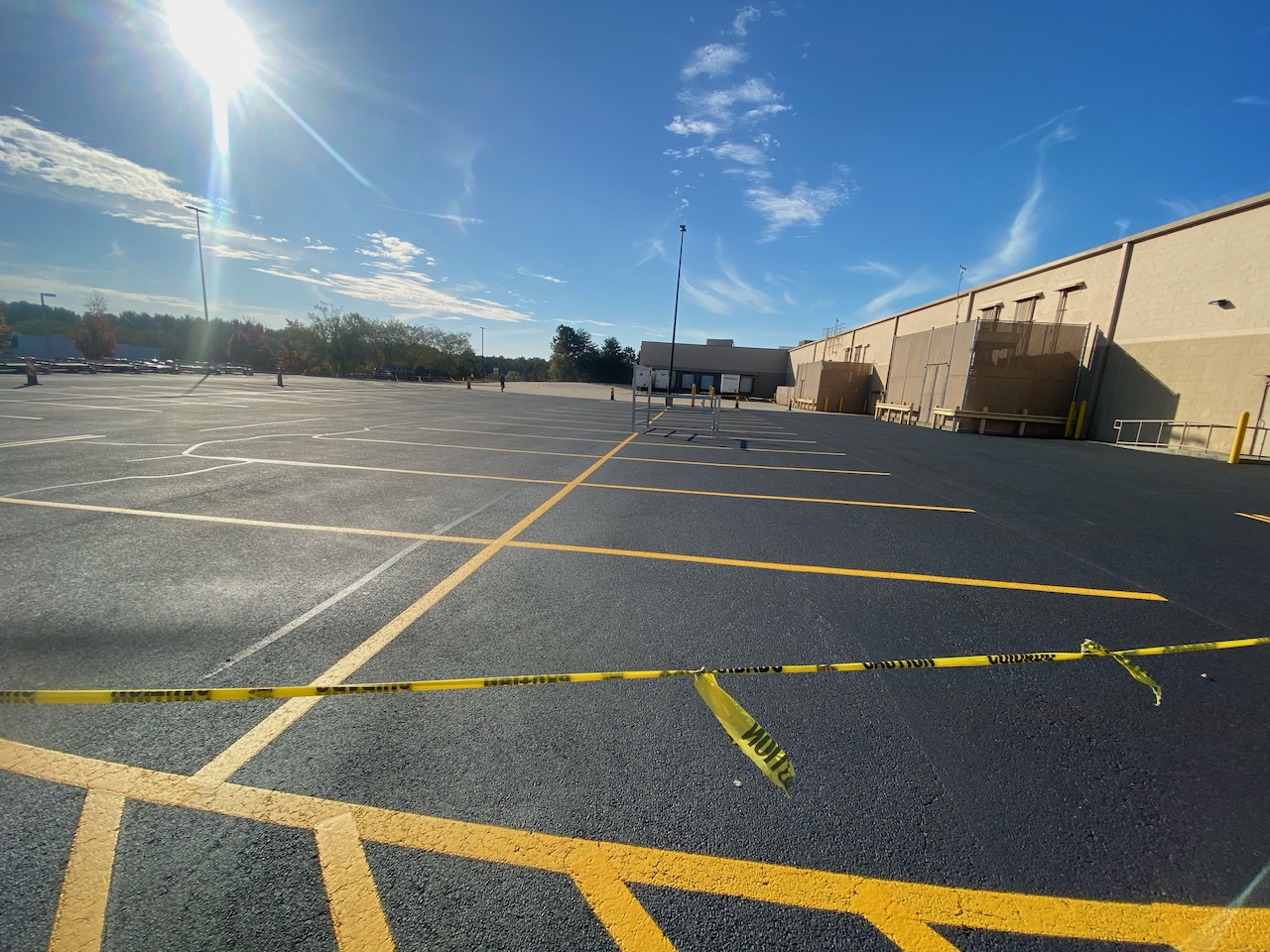
Asphalt Sealcoating & Windy Conditions – Applying Sealants When Winds Are Absent
A light wind helps sealcoating dry faster, so a wind speed of about 4 mph is ideal. If there is no wind, the water molecules that have evaporated from the sealant will linger over the surface, blocking the escape of additional water molecules. Without a breeze to circulate the air, drying and curing will take much longer to occur, especially if the humidity is high.
Sealcoating & Windy Conditions – Applying Sealants When Winds Are High
If a little wind is an advantage, why is it that too much wind is a disadvantage? For starters, if the wind speed is too high, the sealant will dry rapidly from the top down. Once a crust has formed, the sealant trapped below will have more trouble losing its moisture content. The uneven curing normally results in ugly surface cracks that can cause the sealant to fail prematurely.
Another major issue with high winds during a sealant application is the problem of overspray. Ideally, sealcoating should be applied only to the pavement. If the wind catches the liquid sealant leaving the sprayer, however, drops of sealant can be blown onto fences, walls, parked cars, buildings, grass, signs, shrubbery or other nearby objects. Removing dried sealant from many surfaces can be difficult, and there are some surfaces that are likely to be damaged or permanently stained during the removal process.
High winds can also affect the quality of the job. Wind can distort the spray pattern, leaving streaks or causing the sealant to be distributed unevenly. Areas receiving too much or too little sealant can appear blotchy and unsightly. Too little sealant reduces the protection provided by sealcoating, but too much sealant can delay curing and lead to tracking.
Another problem with applying sealants on windy days involves what might be blown onto the pavement before the sealant dries. Grass clippings, candy wrappers, leaves and other debris can become stuck to the sealant. Left in place, the debris can be unattractive, but trying to remove it may also remove the sealant.
When the wind speed is high, the amount of manual work may increase. Edging the perimeter may take longer, extending the length of time that the area must remain closed to traffic. Edging by hand can also make it more difficult to determine exactly how much sealant is being applied, resulting in a transition that is less attractive.
The best way to ensure that your sealcoating will last, look its best and be applied only to your pavement is to hire an experienced, credible professional. MH Greeson Paving is an asphalt sealcoating contractor and we know that there are times when it is best to avoid sealcoating, and we will not start a job unless we believe that the results will meet our own exacting standards while exceeding the customer’s expectations. We offer a variety of services, including crack repairs, parking lot striping, pothole repairs, pavement markings, asphalt patching, asphalt paving and the installation of car stops, bollards and traffic signs. We have a reputation for delivering exemplary work at affordable prices. For a free quote, use the online form or call (770) 335-2983.




